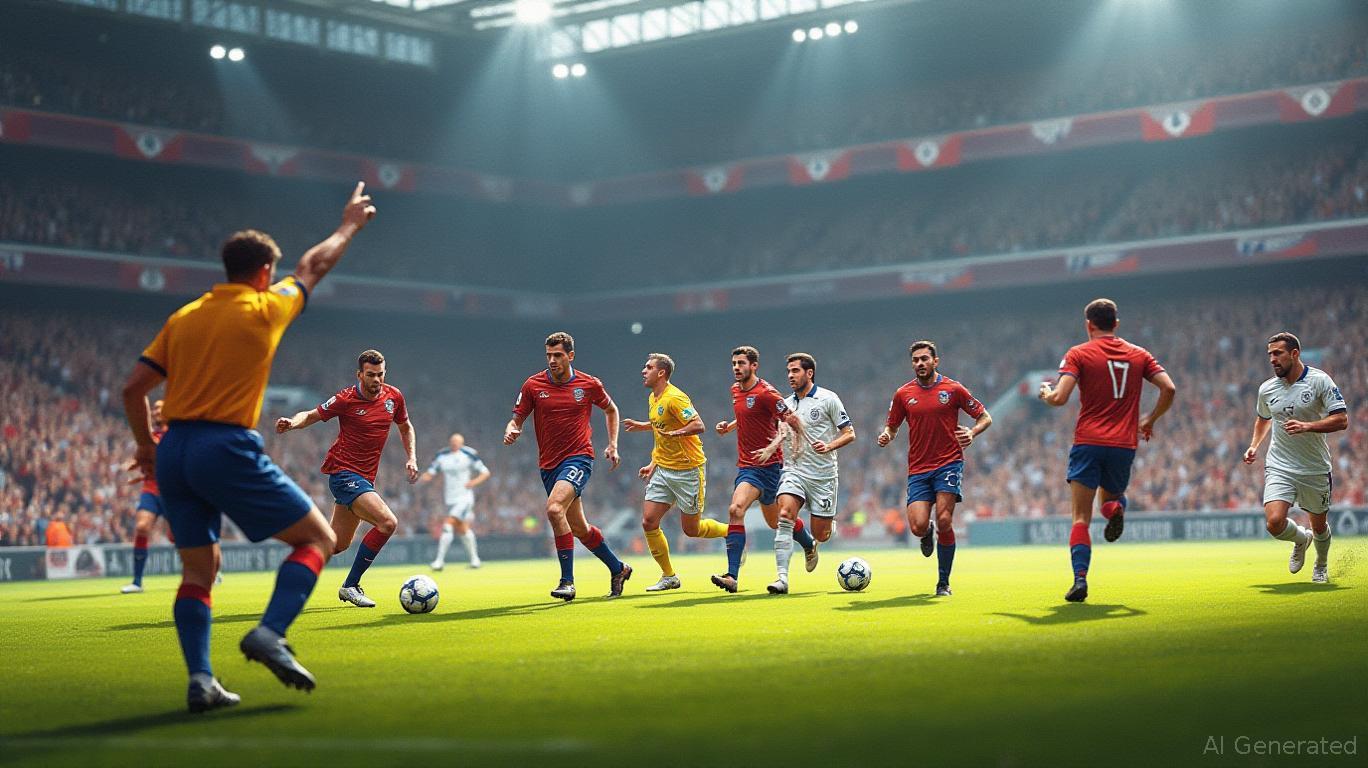Super League's Mysterious 14% Drop: A Technical and Market Behavior Deep Dive
Technical Signal Analysis
Despite today’s sharp decline, no major technical signals (e.g., head-and-shoulders patterns, MACD crosses, or RSI extremes) were triggered for SLE.O. This suggests the drop wasn’t preceded by classic chart patterns signaling a trend reversal or continuation. The absence of signals like a "death cross" or oversold RSI means the move likely stemmed from external factors rather than internal price action.
Order-Flow Breakdown
While no
trading data was available, the 16.2 million shares traded (a 233% increase from the 10-day average) hint at massive liquidity imbalances. High volume without clear institutional block trades points to retail or algorithmic selling. A sharp drop often follows when large sell orders hit a "wall of offers," causing prices to cascade lower as stops get triggered.Peer Comparison
The sector showed divergent behavior, complicating the narrative:
- Winners: AAP (+2.36%) and BH (+1.11%) bucked the trend.
- Losers: ALSN (-1.80%), ADNT (-3.30%), and BEEM (-1.86%) mirrored SLE’s slump.
- Surprises: Small-caps like ATXG (+4.53%) and AACG (+2.16%) saw gains, suggesting sector rotation rather than a broad panic.
This divergence implies the drop wasn’t due to sector-wide fears but idiosyncratic factors tied to SLE or its peers.
Hypothesis Formation
1. Liquidity-Driven Panic
- Data Point: The 14% plunge in a single day with sky-high volume.
- Theory: A sudden rush of sell orders (likely retail or algo-driven) overwhelmed buyers, triggering a self-reinforcing loop of stop-losses. This is common in lightly traded stocks but SLE’s $3.8B market cap makes it unusual—suggesting extreme sentiment.
2. Position Unwinding Amid Sector Rotation
- Data Point: Peers like ALSN and also fell, while AAP and rose.
- Theory: Investors may have rotated out of speculative "theme stocks" (e.g., AI, crypto) into more stable names. SLE’s heavy retail ownership could amplify this shift, as retail traders often cluster in high-beta stocks.
A chart showing SLE.O’s intraday price collapse, overlayed with volume spikes and peer performance (AAP, ALSN, BH).
Writeup: Why Super League Plunged 14%—No News, Just Market Mechanics
Super League (SLE.O) cratered 14.26% today in what appeared to be a classic "no news" crash—a phenomenon where technical and behavioral factors override fundamentals. Here’s the breakdown:
The Sell-Off Was Technical, Not Fundamental
No earnings reports, regulatory updates, or product announcements preceded the drop. Technical indicators like RSI or MACD showed no warning signs, meaning the move wasn’t rooted in classical chart patterns. Instead, the massive volume (16.2 million shares, 233% above average) suggests a sudden liquidity vacuum.
Why the Crash? Three Clues:
- Retail Exodus: SLE has a heavy retail investor base, which often sells en masse during market jitters. High volume with no block trades points to individual investors dumping shares.
- Sector Rotation: While some peers like AAP rose, others like ALSN and ADNT fell—signaling a shift away from speculative bets. SLE, a play on blockchain and esports, likely bore the brunt of this rotation.
- Algorithmic Amplification: High-frequency traders might have capitalized on the selling pressure, further depressing prices as algorithms hunted for stops.
What Does This Mean for Investors?
- Beware Thinly Traded Giants: Even large-cap stocks like SLE aren’t immune to liquidity shocks if retail sentiment turns.
- Watch the Peers: SLE’s performance is tied to broader themes (AI, crypto). Weakness in ALSN or ADNT could signal deeper sector headwinds.
A paragraph here would analyze historical instances of similar "no news" crashes in high-beta stocks, comparing recovery timelines and catalysts.
Bottom Line
Super League’s plunge was a textbook case of market mechanics overriding fundamentals. Without clear catalysts, the drop likely stemmed from a toxic mix of retail panic, algorithmic selling, and sector rotation. Investors in speculative themes should stay wary—liquidity can evaporate faster than headlines.


Comments
No comments yet